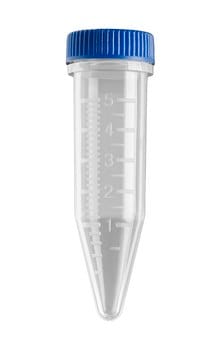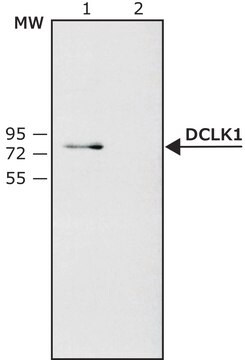詳細
We are committed to bringing you greener alternative products, which adhere to one or more of The 12 Principles of Green Chemistry.This antibody is Preservative-free, produced without the harm or sacrifice of animals and exceptionally stable to allow for ambient shipping and storage if needed and thus aligns with "Waste Prevention", "Designing Safer Chemicals" and "Design for Energy Efficiency".
Click here for more information.
ZooMAb® antibodies represent an entirely new generation of recombinant monoclonal antibodies.Each ZooMAb® antibody is manufactured using our proprietary recombinant expression system, purified to homogeneity, and precisely dispensed to produce robust and highly reproducible lot-to-lot consistency. Only top-performing clones are released for use by researchers. Each antibody is validated for high specificity and affinity across multiple applications, including its most commonly used application. ZooMAb® antibodies are reliably available and ready to ship when you need them.
特異性
Clone 1L16 is a ZooMAb® Rabbit recombinant monoclonal antibody that specifically detects Bcl-2-binding component 3 (PUMA). It targets an epitope within 17 amino acids from the C-terminal region.
免疫原
KLH-conjugated linear peptide corresponding to 17 amino acids from the C-terminal region of human Bcl-2-binding component 3 (PUMA).
アプリケーション
Quality Control Testing
Evaluated by Western Blotting in HepG2 cell lysate.
Western Blotting Analysis: A 1:1,000 dilution of this antibody detected PUMA in HepG2 cell lysate.
Tested applications
Western Blotting Analysis: A 1:1,000 dilution from a representative lot detected PUMA in NIH3T3 and L6 cell lysates.
Affinity Binding Assay: A representative lot of this antibody bound PUMA peptide with a KD of 1.0 x 10-12 in an affinity binding assay.
Immunohistochemistry (Paraffin) Analysis: A 1:100 dilution from a representative lot detected PUMA in human small intestine tissue sections.
Immunocytochemistry Analysis: A 1:1,000 dilution from a representative lot detected PUMA in A431, HeLa, HepG2, and NIH3T3 cells.
Note: Actual optimal working dilutions must be determined by end user as specimens, and experimental conditions may vary with the end user
ターゲットの説明
Bcl-2-binding component 3, isoforms 1/2 (UniProt: Q9BXH1; also known as JFY-1, p53 up-regulated modulator of apoptosis. PUMA) is encoded by the BBC3 (also known as PUMA) gene (Gene ID: 27113) in human. PUMA is a member of the BH3-only Bcl-2 family that is localized in the mitochondria and serves as a critical mediator of p53-dependent and -independent apoptosis induced by a wide variety of stress stimuli and growth factor/cytokine withdrawal. It is normally expressed at a very low level in cells, however, it is rapidly induced under stress conditions. PUMA transduces death signals primarily to the mitochondria, where it acts indirectly on Bax and/or Bak by relieving the inhibition imposed by anti-apoptotic members. It is reported to bind and antagonize all antiapoptotic members of the Bcl-2 family and induce mitochondrial dysfunction, cytochrome c release, and caspase activation. Its BH3 domain, localized to amino acids 137-151, is required for its interaction with Bcl-2 like proteins. The BH3 domains forms an amphipathic a-helical structure that allows it to bind to anti-apoptotic Bcl-2 family proteins. Its C-terminal region contains a hydrophobic domain that directs its mitochondrial localization and both the BH3 domain and mitochondrial localization are shown to be essential induction of apoptosis. PUMA is considered as an essential mediator of p53-dependent and p53-independent apoptosis. Inhibition of PUMA can lead to apoptosis deficiency and increases the risk for cancer development and therapeutic resistance. This ZooMAb® recombinant monoclonal antibody, generated by our propriety technology, offers significantly enhanced specificity, affinity, reproducibility, and stability over conventional monoclonals. (Ref.: Yu, J., and Zhang, L. (2008). Oncogene. 27 (suppl. 1); S71-S83; Yu, J., et al. (2001). Mol Cell. 7(3); 673-682).
物理的形状
Purified recombinant rabbit monoclonal antibody IgG, lyophilized in PBS, 5% Trehalose, normal appearance a coarse or translucent resin. The PBS/trehalose components in the ZooMAb formulation can have the appearance of a semi-solid (bead like gel) after lyophilization. This is a normal phenomenon. Please follow the recommended reconstitution procedure in the data sheet to dissolve the semi-solid, bead-like, gel-appearing material. The resulting antibody solution is completely stable and functional as proven by full functional testing. Contains no biocide or preservatives, such as azide, or any animal by-products. Larger pack sizes provided as multiples of 25 μL.
再構成
300 μg/mL after reconstitution at 25 μL per vial. Please refer to guidance on suggested starting dilutions and/or titers per application and sample type.
保管および安定性
Recommend storage of lyophilized product at 2-8°C; Before reconstitution, micro-centrifuge vials briefly to spin down material to bottom of the vial; Reconstitute each vial by adding 25 μL of filtered lab grade water or PBS; Reconstituted antibodies can be stored at 2-8°C, or -20°C for long term storage. Avoid repeated freeze-thaws.
法的情報
ZooMAb is a registered trademark of Merck KGaA, Darmstadt, Germany
免責事項
Unless otherwise stated in our catalog or other company documentation accompanying the product(s), our products are intended for research use only and are not to be used for any other purpose, which includes but is not limited to, unauthorized commercial uses, in vitro diagnostic uses, ex vivo or in vivo therapeutic uses or any type of consumption or application to humans or animals.





